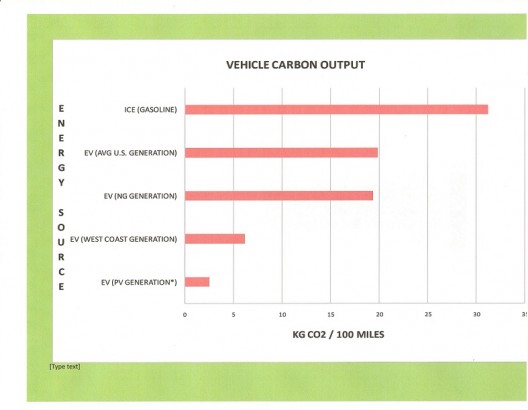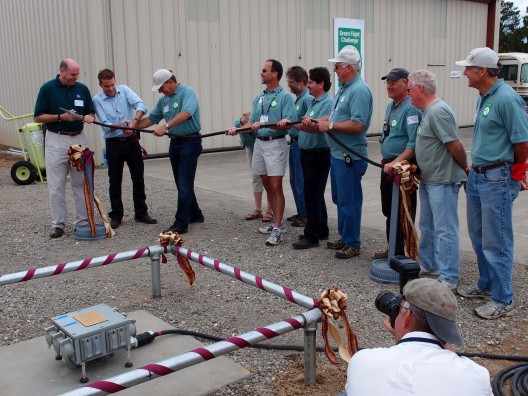The blog received several comments about the relative energy use of electric aircraft, and how NASA and the CAFE Foundation might have overstated the efficiency and low emissions for the electric aircraft in the competition.
Reader Robert Swanson thought the conversion between kilowatt hours and gasoline created a discrepancy. “The discrepancy in performance of gasoline and electric powered aircraft is due to an absurd conversion factor between kWh and gallons of gasoline. The conversion should be calculated from the number of gallons of gasoline consumed by the engine driving the generator used to charge the batteries.”
Steven Crow added this objection. “Even after reading the relevant pdf’s, it is far from clear to me how CAFE computed ‘mileage’ for the electric aircraft. The right way of doing it is clear enough: base the mileage on the fossil fuel used to charge the batteries. Electric motors and batteries are not subject to Carnot efficiency limitations. They can seem to be nearly 100-percent efficient until one looks at the power source that charged the batteries. That objection would disappear if CAFE used solar power to charge the batteries, but the rules appear to require diesel generators.”
Alan Soule, a CAFE board member and Charging Master for the event, drives a Tesla roadster which he will soon charge through solar panels on his house’s roof – making him a very green motorist.

Alan Soule's chart showing relative CO2 emissions for different electric power sources, including NG (natural gas) and PV (photovoltaics)
He says the following about the chart shown here. “I have used the attached chart for talks that I have given on EV’s. People just assumed that all power generation uses coal. Actually, about 50 percent of the electricity generated in the U.S. is from coal. California only has a few coal-fired plants and a relatively large proportion of renewable energy sources. Thus, in California, when you consider that the electric motors are around 90 percent efficient and the batteries store about 85 percent of the power that is input to the charger, the carbon ‘footprint’ of an electric vehicle is considerably less than [that of] an IC vehicle.
“As I discovered…, the electric airplanes in the GFC were 50 percent more efficient than my electric vehicle, with the electric airplanes about the cleanest way to get around.”

NASA Technology Chief Joe Parrish, Sonoma County Supervisor Mike McGuire, and CAFE President Brien Seeley cut the ceremonial gas hose to open first electric aircraft charging station in US
CAFE’s electric charging stations, the first in any U. S. airport, provide six outlets for as many aircraft, and are supplied with clean power from geothermal sites near Geyser Peak, one of the turnpoints on the Green Flight Challenge course. There was no need, in this case, for a coal/natural gas, or Diesel conversion and GFC challengers flew on a near-pristine source of power.
Otherwise, yes – there is work to be done to make even EVs cleaner and less dependent on carbon-based power sources. We all share the responsibility to make this part of a better future.

Comments 2
In spite of your elaborate justifications involving the “carbon footprint” of various power generation characteristics broken down by localities, the truth is that your “equivalent gallons” formulation unfairly skewed the rules such that the Green Flight Challenge competition favored electric aircraft, and thus largely nullifying the encouragement of practical technical innovation in this field. Though I do admire the technology of the electric aircraft designs, the truth is: they are currently impractical as a means of propulsion for any reasonable aircraft range at a reasonable cost. The two top contending electric aircraft designs have no chance of attaining commercialization and/or widespread utilization. In truth, biofuels have far more potential as a viable renewable energy source. In spite of your embrace of the trendy notion that CO2 is a “pollutant,” plants will continue to ignore that ill-conceived notion and go right on using it as a nutrient, combining it with solar energy to give us energy-dense fuel and oxygen. Perhaps your next competition should embrace this symbiotic relation we have with plants, and not unfairly write the rules in favor of short-range batteries. How about a 1,000 mile course which must be flown at 100 mph with a two-seat aircraft… the winner uses the least bio-derived fuel ?.. This would be far more representative of what a general aviation plane mission actually is in the current today. Thank you for your consideration.
(Editor’s Note: Having heard Nobel Prize winner Dr. Ben Santer and had an opportunity to discuss his twenty-five year history of proving his points on climate change, your editor hardly thinks that the notion that CO2 is pollutant is “trendy.” Reading Dr. James Hanson’s Storms of My Grandchildren provides too much hard, scientific evidence that atmospheric CO2 above 350 ppm is causing climate change that may be irreversible for centuries for the point to be considered “trendy.” Please read the reports issued by the Intergovernmental Panel on Climate Change. A woman recently died of CO2 inhalation when an errant valve on a pop machine filled the restroom she was using at a fast-food restaurant filled the space with the otherwise beneficial gas. Likewise, nitrogen in excess can kill.
http://www.ipcc.ch/publications_and_data/publications_and_data_reports.shtml
You make a good point in calling more for bio-fuel development, but the CAFE board worked hard to make sure that such energy sources were included in this year’s event, and given a fair opportunity.
If we are to encourage commercial development of electric and other alternative fuel vehicles, the initial efforts will probably be modest attempts compared to what follows. Lindbergh flew the Atlantic in 1927 in a terribly impractical machine in terms of commercial viability. 15 years later, my father crossed the same ocean as a crew chief on a four-engine C-54.)
Dan,
The Green Flight Challenge was clearly stated from the start to be promoting extreme efficiency in flight, not more of the same but slightly better. Frankly, I think that they achieved that goal stunningly. I was very skeptical of achieving the goal that was achieved. Very significantly it was a previous winner who scooped the pool, but with a very different solution to their previous winning aircraft. In the process they have advanced the level of achievement for electric powered aircraft and provided a new achieveable green power payload solution. Brilliant performance Pipistrel.
As for biofuels you are right to say that they are very much a part of the future solution and should reasonably be given credit for their best efficiency of production. By this I mean that if the vehicle was to be powered by ethanol then the efficiency of production should not be based on US corn production efficiencies but on Australian or Brazillian cane ethanol CO2 emission production efficiencies ie 12,000 litres per hectare with 10% max CO2 production emissions. But by the same reasoning it is a fair argument to say that the electricity could be of solar origin.
Regardless, the race has been run and won. The result was spectacular.
To my thinking the 350 kilometer flight target is a very important flight distance/time target for the future of PAVs to achieve. This is a very useful range for PAV commuting, and this is largely what the challenge is attempting to validate.